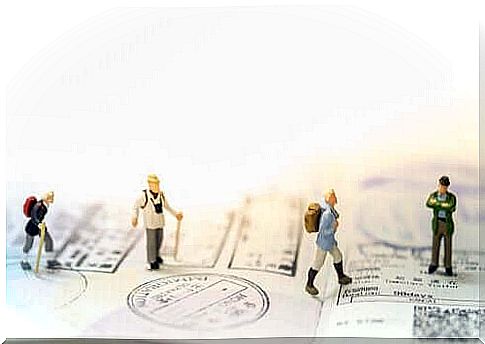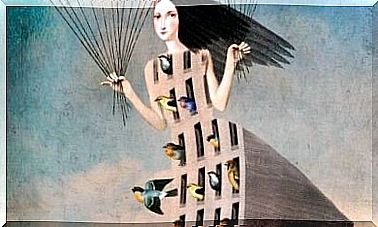Ulysses Syndrome: A Modern Problem

Ulysses syndrome, also known as Immigrant Syndrome or Chronic and Multiple Stress , manifests itself in people who leave their homeland to emigrate to a new place. It is more than the usual sadness that people experience when they are in an unfamiliar place.
Ulysses syndrome is very similar to other conditions. So it is easy to confuse with other mental problems. In certain cases, the symptoms are so severe that a diagnosis of psychosis is made. In reality, it’s just a form of extraordinary stress.
Psychiatrist Joseba Achotegui of the University of Barcelona coined the term Ulysses syndrome in 2002. He has studied it extensively in Spain, one of the preferred countries to immigrate to. He estimates that about 800,000 people in Spain suffer from the syndrome.

Migration and Ulysses syndrome
Migration is a complicated matter and certain countries do not have the resources to process all their immigrants. There are also many different forms of migration.
Not all migrants get Odysseus syndrome. A person’s life and personality play a major role, in combination with the circumstances of his or her migration and the environment to which he or she moves.
A person’s personality is important because it affects how independent and flexible they are. Starting a life in a new country takes a lot of psychological strength and resilience. It’s not easy to start over in an unfamiliar place, and that change often leads to dysfunction or underlying problems.
Migration conditions also play a major role. It is not the same to have to flee a war, but to simply have a better life or to pursue a specific opportunity. Also, some people have to leave their families behind, while others emigrate with their loved ones.
The environment and symptoms
One of the most important factors is the person’s new environment, which makes it easier or harder for him or her to adapt. The country may also be socio-economically prepared for immigrants or not. In other words, whether it is easy for migrants to find a job or not and whether or not they receive outside help.

Ulysses syndrome manifests itself when a person feels that he or she is on their limits, but cannot find a way to process or express themselves.
This usually happens when a person feels that he or she will fail in the new country or end up in a worse economic situation. Thus, the stress increases to the point that one feels completely blocked.
This is when the symptoms of the syndrome will manifest, including the following:
- The feeling of being an outsider. They feel like an outsider in their environment and everyone else feels like a stranger to them. This leads to fear and a strong sense of vulnerability.
- Constant sorrow. They begin to long for their homeland and feel constantly overwhelmed.
- Health issues. It is common for them to develop physical problems such as migraines, nausea or dizziness.
- Stress and Anxiety. This is the most obvious symptom. They are in a constant state of fear, as if they expect something terrible to happen. It can also cause them to have trouble sleeping and feel very insecure around other people.
- Isolation and Self-Esteem. They begin to isolate themselves from their new environment because it feels threatening. That also begins to affect their self-image and self-esteem.
There are also cases where Odysseus syndrome leads to more serious problems. Some people develop addictions or do illegal things because of the frustration of not living up to their expectations. In many of those cases, the problem is so serious that they need a psychologist.









